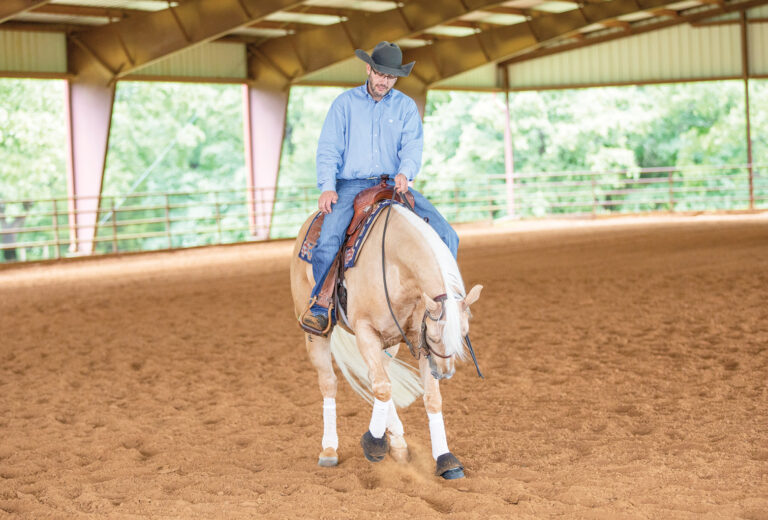
1. Your seat bones are a highly effective way of communicating with your horse, but only if you…
A) sit properly in the saddle.
B) ride in the right kind of saddle.
C) also use your voice when you cue.
2. For maximum “seat bone power,” the ideal position in the saddle is to sit…
(A) “on your pockets,” with your lower back slightly rounded.
(B) on the triangle formed by your tail bone and your upper thighs.
(C) on the triangle formed by your pubic bone and seat bones.
3. What is the quickest, easiest way to understand how much your seat bones affect your horse?
A) Press on your saddle’s seat.
B) Sit on your fingertips.
C) Look at your backside in a mirror.
4. True or false: If you arch your back and lean forward a just a bit in the saddle, it brings your seat bones into closer contact with your horse’s back.
T / F
HOW’D YOU DO? (Answers below.)
1. A is correct. How you sit in your saddle affects how well your seat bones will “communicate” with your horse. This is true whether you ride Western or English (a Western saddle with a flexible tree offers especially sensitive feel through the seat bones).
[LEARN: The biomechanics for sitting properly in the saddle.]
2. C is correct. Sitting on the triangle formed by your pubic bone and seat bones and tucking your rear end under just a bit is the ideal. From this position, you’re able to use your seat bones in concert with your weight and other aids to finesse turns, lateral movements, lope departs, lead changes, and many other maneuvers.
3. B is correct. Sit in a chair and place your hands under your seat, with your fingertips positioned under your seat bones. Then move your seat even slightly and see how much your fingers notice it! For example, slouch a bit and sit back “on your pockets,” and see how this affects your seat bones’ contact with your fingers as the bones slide forward.
[LEARN how Linda Parelli uses *her* seat bones in the saddle.]
4. F is correct. The opposite is true—it raises your seat bones up and away from contact with your horse’s back. Try it in the chair and see for yourself!
[MORE: On seat bones and building core muscles to use them.]
Hey! Not already receiving H&R’s fun and informative newsletter? Sign up right now for The Ride. It’s free!






